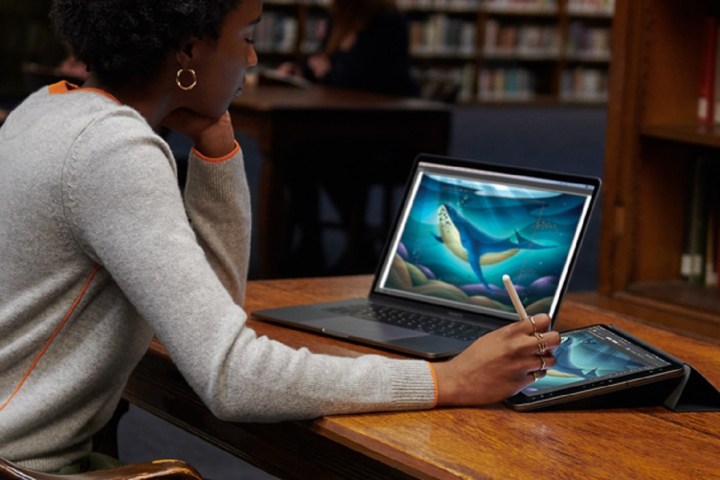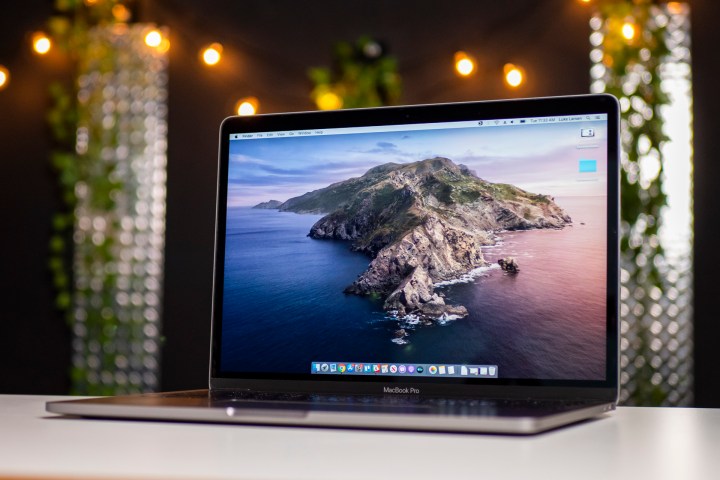One of the most exciting features to come out of MacOS Catalina is its new second screen support feature, Sidecar. The new tech turns your iPad into a second screen for your Mac, as well as a drawing tablet for illustrators and designers. To get the most out of Sidecar, you’ll need to know how to set it up and what it requires to work properly.
Here’s what you’ll need to get Sidecar working in MacOS Catalina, and some simple instructions about how to set it up.
1. Check your hardware

Sidecar only works on the newer models of iPads and MacBooks. According to that same white paper Apple published about Sidecar, Catalina’s second screen support feature does have a processor requirement for Macs: You’ll need a Mac with a Skylake processor or later.
The white paper also provides a list of supported Mac models that can run Sidecar, which include: 2016 MacBooks or later, 2018 MacBook Airs or later, 2016 MacBook Pros or later, 2018 Mac minis or later, 2015 iMacs or later, 2017 iMac Pros or later, and 2019 Mac Pros or later. It should be noted that this is a different system requirement than Catalina itself.
Furthermore, Sidecar can only be used on iPads that support Apple Pencil. The white paper also went on to list the individual iPad models that are able to run Sidecar: Sixth-generation iPads or later, fifth-generation iPad minis, third-generation iPad Airs, and iPad Pros (9.7-inch, 10.5-inch, 11-inch, and 12.9-inch models).
2. Update to iPadOS and MacOS Catalina

Next up is software. You will, of course, need to start by updating your Mac to Catalina. Start off by backing up your Mac, and then make sure you have at least a minimum of 12.5GB of storage (or at least 18.5GB of storage for Macs currently running OS X Yosemite or earlier). Once you’ve done all that, you’re ready to download Catalina.
Additionally, if you plan on using certain Sidecar-related features like Continuity Sketch and Markup, you’ll also need to make sure that all of your devices (in which you plan to use those features) have the right operating systems. According to Apple’s white paper about Sidecar, if you want to use Continuity Sketch or Markup, you’ll need to have a Mac running Catalina, an iPad running iPadOS, or an iPhone running at least iOS 13.
3. Log in to the same Apple ID on your devices
When using Sidecar, you’ll also need to make sure that the devices you’re pairing up (your Mac and iPad) both have the same Apple ID account assigned to them.
You won’t be able to use Sidecar with devices that each have different Apple IDs.
4. Make the connection

Once you’re logged in, you can connect to Sidecar via the AirPlay menu on your Mac. Once you select the AirPlay Menu, select your iPad from that menu. From there, your AirPlay icon should now appear as an iPad icon. Click this icon to view your Sidecar-related options.
While it’s true that you can use the Sidecar feature by either wirelessly connecting your devices or via a wired connection, there are still two caveats worth remembering. For wireless connections, it’s important to remember that you can only use your iPad wirelessly up to 10 meters away from your Mac. Also, according to Apple’s white paper, both devices need to have Bluetooth, Wi-Fi, and Handoff turned on.
For wired connections, the required cable type largely depends on which iPad model you’re using, but you’ll need either a lightning or USB-C cable.
5. Start Sidecar-ing!

Once you link your iPad to your Mac using Sidecar, you can start selecting, dragging, and positioning Mac application windows to your iPad screen. You can use the menu option instead if you don’t want to move the icons manually. Look for a green button and hover your cursor over it. The feature will then give you the option of moving the window to your iPad screen.
Apple has been clear that, for the most part, support for Sidecar “is included at the system level for all apps.” The company states that this support includes “both general navigation and drawing with Apple Pencil.”
In an October 2019 press release, Apple said that iPad users would need to use explicitly compatible apps with stylus input if they wanted to use an Apple pencil to write, sketch, or draw on the device. That app could be an Apple or third-party Mac product. Luckily, this requirement isn’t significantly limiting since many apps already work efficiently with Sidecar.
Apple’s main webpage for Catalina showcases several phenomenal productivity apps like Adobe Illustrator, Affinity Photo, Cinema 4D, Maya, and ZBrush. Each of these services pairs wonderfully with Sidecar if you’re in need of a new tool.


